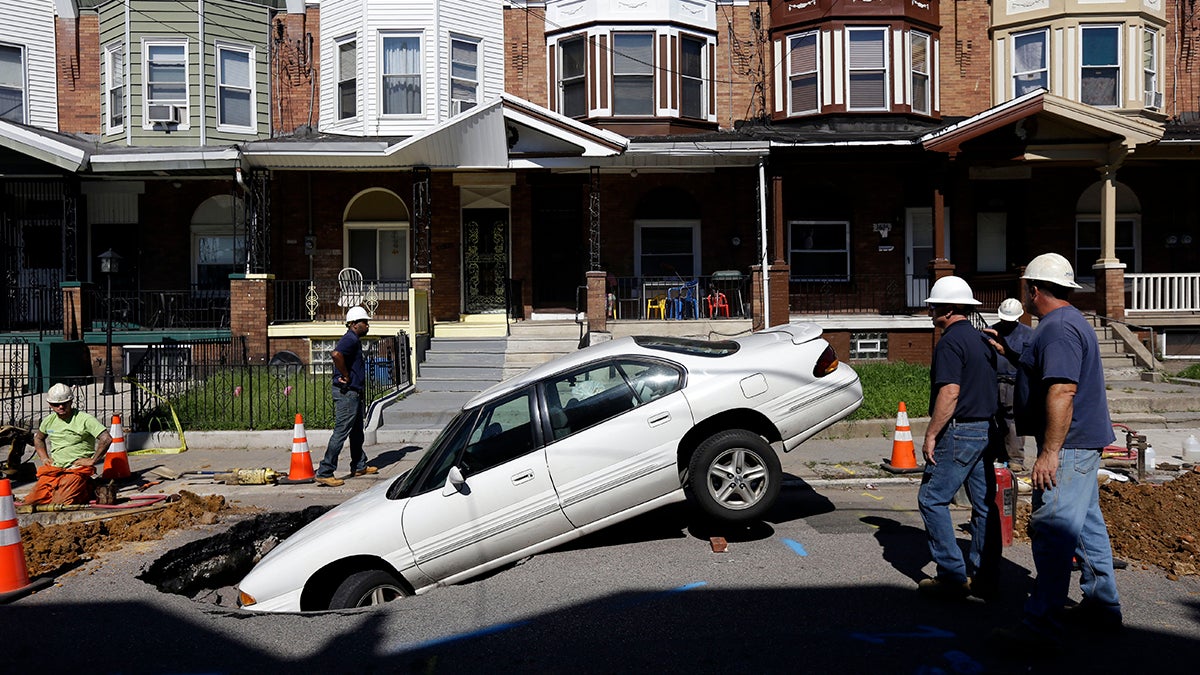That sinking feeling when Pa. geology swallows part of your town

Sinkholes occur across Pennsylvania
Or how limestone and rain mix to create some serious public works headaches.
It started as a pothole.
A driver blew a tire in the Borough of Ephrata at 6 a.m. on Election Day and alerted the public works department.
By the time the sun came up the following day, the sinkhole was 30 feet wide, said Paul Swangren, superintendent of Ephrata’s public works and water. By some estimates the hole was 20 feet deep. After swallowing the intersection of West Pine Street and Park Avenue, it threatened two apartment buildings and almost ruptured a natural gas line.
Sinkholes are common across Pennsylvania, but why they happen depends on where you are.
In the western part of the state, sinkholes generally occur in mining areas: caverns underground allow the ground to subside. Throughout south-central and southeastern Pennsylvania, areas underlain by limestone bedrock, sinkholes are the love child of geology and weather.
Over time, rainwater mixes with carbon dioxide to make a weak acid that eats away at the limestone. That creates caverns under the ground’s surface, which can then collapse, creating a sinkhole. While a sinkhole can take anywhere from mere minutes to hours to open up, the subterranean process that causes that opening takes much longer.
And if it isn’t door number one or door number two, there’s door number three: the slow decay of buried construction materials.
Having the earth open up in a rural area is one thing, but it’s a different animal in the city, said Swangren.
“We’re not just looking at a hole in the ground, we’re looking at public safety and how to mitigate some of the damage.”
Ephrata’s sinkholes don’t generally consume entire roadways. They’ll open up in parks or near the library, and a member of the public works department will mark them off with a cone until they can assess the situation. Usually, they’ll make sure there’s not a larger problem, such as a break in a water line, and then fill the holes in. It’s just part of life in Lancaster County.
William Kochanov is a senior geologic scientist with the Pennsylvania Department of Conservation and Natural Resources. He said taking care of a sinkhole is a two-prong endeavor: you have to deal with the whats and the whys.
“It’s almost like playing detective. All the plumbing is connected in a natural system. You know, if we patch it here, what about down the street? Perhaps we could expect more of the same to occur.”
Kochanov said sinkholes can be exacerbated in urban areas. “The land surface has been covered by buildings, roadways, the water sometimes doesn’t have that place to get back down into the ground where it wants to.”
And that means water can end up eating away at rock it wouldn’t have otherwise encountered.
Most insurance doesn’t cover sinkholes, but property owners can purchase an add-on policy, something that the Borough of Ephrata doesn’t have. They’re dipping into a reserve fund to pay for the $500,000 slow-motion catastrophe.
WHYY is your source for fact-based, in-depth journalism and information. As a nonprofit organization, we rely on financial support from readers like you. Please give today.


